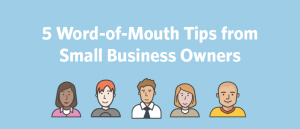Welcome friends to the fourth and final part of our e-commerce SEO guide. Previously in this series:
- Part one: keyword & competitor research
- Part two: errors & on-page optimisation
- Part three: testing & content
We’re helping you to be sure that your e-commerce store is doing everything that it can SEO-wise to draw in customers – helping you to improve sales, increase conversions and stay ahead of the competition.
There’s no time to hang around, so let’s get down to it!
Step six: Link building
Link building is all about the quality not the quantity.
If a lot of low-quality sites link to yours, the resulting traffic will also be low-quality and Google may even penalise you for it.
A low-quality link comes from a site that has a low authority score. You can check this using Moz’s toolbar. However, it’s not always that simple. You can often see for yourself – some sites may have a high domain authority but be full of scraped content and ads. Generally, sites with low authority have poorly written content and lots of ads.
Another one to look out for is content farms (or article marketing sites); a site which takes content on just about any topic. Google doesn’t like them so it is best to stay away from them.
You should look at earning links from high quality sites instead. Creating a high-quality guest post, a quote for a story, a research study or a great infographic will have a much better effect on your ranking than a poor quality link.
You can find press opportunities through sites like HARO (help a reporter out).
Another good way to get links is through reviews on social media. You can send out emails to get customers to review items they have purchased, along with an offer to make it an enticing prospect.
Find any broken links on your site and remove them to stop the seepage of your ranking. Here’s a handy guide from QuickSprout to help you with this.
When you are link building, you need to remember to NOT:
- Use the same anchor text – variety is key.
- Link to the same page over and over – link to the most relevant.
- Get links from rubbish websites.
If you do get linked to from a high-authority website, thank them and start to build a relationship.
Step seven: Think local
If you are a local business with a bricks-and-mortar shop, you need to ensure that your name, address and phone number for all your locations are available on your site. Add your business to all relevant directories including niche directories with appropriate keywords. Use your location in your descriptions on these sites.
Google have recently released an update to their algorithm nicknamed Google Pigeon. This has boosted local search results and is very important with the increase in people browsing the web when out and about.
Step eight – SEO tools
Whether you are a solo SEO guru or you are part of a crack-team of SEO experts, there are a number of tools you should be using. Our favourites here at Elementary Digital, some of which have already been referenced are:
- SEOmoz Keyword Tool
- Google AdWords Keyword Tool
- Authority Labs for Monitoring
- Ubersuggest Keyword Suggestion Tool
- Open Site Explorer
- Screaming Frog
- Mergewords
- Buzzstream
- Citation Labs Broken Link Finder
Using these can help your SEO processes and improve the quality of the data that you have about the site you are working on, making certain that you are getting the most from it.
Phew!
That’s it. That’s everything you could possibly need to know about e-commerce SEO.
We hope you have enjoyed the posts.
Post originally appeared on Elementary Digital
Digital & Social Articles on Business 2 Community
(799)




